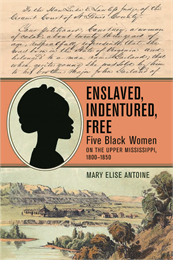Current Issue of the Wisconsin Magazine of History
Winter 2022, Volume 106, Number 2
Featured Story
A Well-Traveled Building
By Brian J. Bigler
After being constructed in Norway and brought to Chicago for the 1893 World’s Columbia Exposition, the Norway Pavilion long outlived its temporary purpose and traveled full circle from Europe to Illinois and back home—after a 122-year tour of southern Wisconsin. Brian Bigler explores its many stops along the way, and its return to Orkdal, Norway, in this engaging image essay.
The Wongs of Beloit, Wisconsin
By Beatrice Loftus McKenzie
During the long period of Chinese exclusion stretching from 1882 to 1943, it was nearly impossible to emigrate to the United States from China. Most Chinese men living in America were sojourners who earned money abroad but maintained a family in their home villages. Charles Wong chose a different path. Like several of his male family members, he had been claimed as a son by an uncle who was already a US citizen. Because Charles was an American citizen, his Chinese-born wife, Yee Shee, was eligible to enter the US. In 1923, she traveled with Charles to Beloit, Wisconsin, where Charles had moved with family members several years before to operate a restaurant. Charles and Yee Shee would have seven children between 1924 and 1937—when Charles’s untimely death put the family’s future in jeopardy. As one of very few Chinese women to immigrate to the United States in the period of Chinese exclusion, Yee Shee exhibited profound courage in the face of an uncertain future. Adapted from the 2022 book by the University of Wisconsin Press.

Asylum Staff
Staff at the Wisconsin State Hospital, where Anna Ott lived the last two decades of her life. WHI IMAGE ID 11289
Ott v. Ott - Family Violence, Divorce, and Women’s Agency in Nineteenth-Century Wisconsin
By Kim E. Nielsen
As a woman with uncommon privilege, professional standing, and financial means, Anna Ott, the first female physician to practice in Madison, stood out from her peers. Yet behind the doors of her stately home on Lake Mendota was marital discord and violence. Though she brought divorce suits against her husband in 1859 and again in 1868, her efforts to prove her husband’s violence and escape the marriage failed. Anna’s involuntary commitment to the Wisconsin State Hospital for the Insane, on the heels of an abusive home life and tumultuous divorce proceedings, pulled her from the life she had so carefully arranged and thrust her into a system of legal and institutional control. Ott’s life, shaped by the structures of gender and the law, sexism and ableism, tells a story that is both familiar and exceptional.
Book Excerpt - Enslaved, Indentured, Free: Five Black Women on the Upper Mississippi, 1800––1850
By Mary Elise Antoine
This excerpt, from a Wisconsin Historical Society Press book published this fall, follows two enslaved women, Courtney and Rachel, as they sued for their freedom, and the freedom of their young sons, in St. Louis in the mid-1830s. Both women were born into slavery around 1812. Through no choice of their own, they were removed from the care of their mothers and families, given or sold to strangers, and transported by white enslavers into territories where slavery was illegal. Both lived for a period in Prairie du Chien in southwest Wisconsin. In 1834, Rachel petitioned for the freedom of herself and her son, James Henry, based on their prior residency in a free territory. Almost exactly one year later, Courtney did the same.
A subscription to the Wisconsin Magazine of History is a benefit of membership to the Wisconsin Historical Society. The current issue, described above, will become available in the online archives as soon the next issue is published.
Become a Wisconsin Historical Society member today!
Subscribe today by becoming a member
Learn More:



